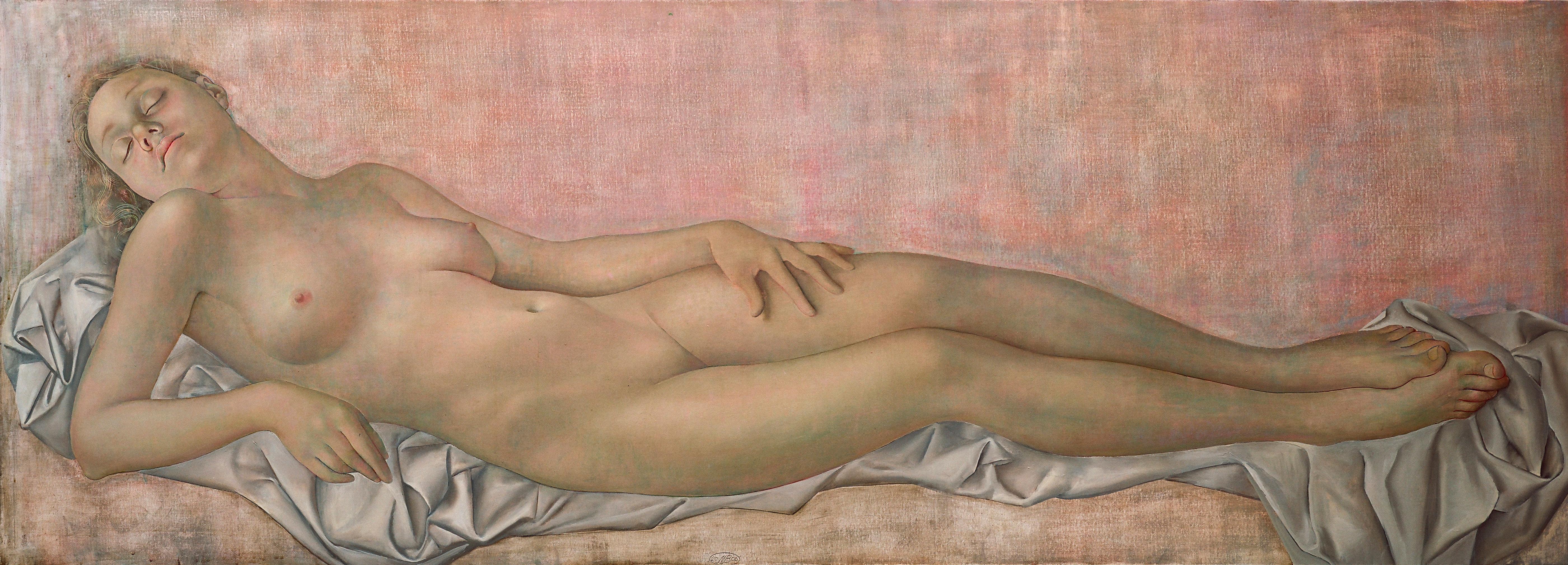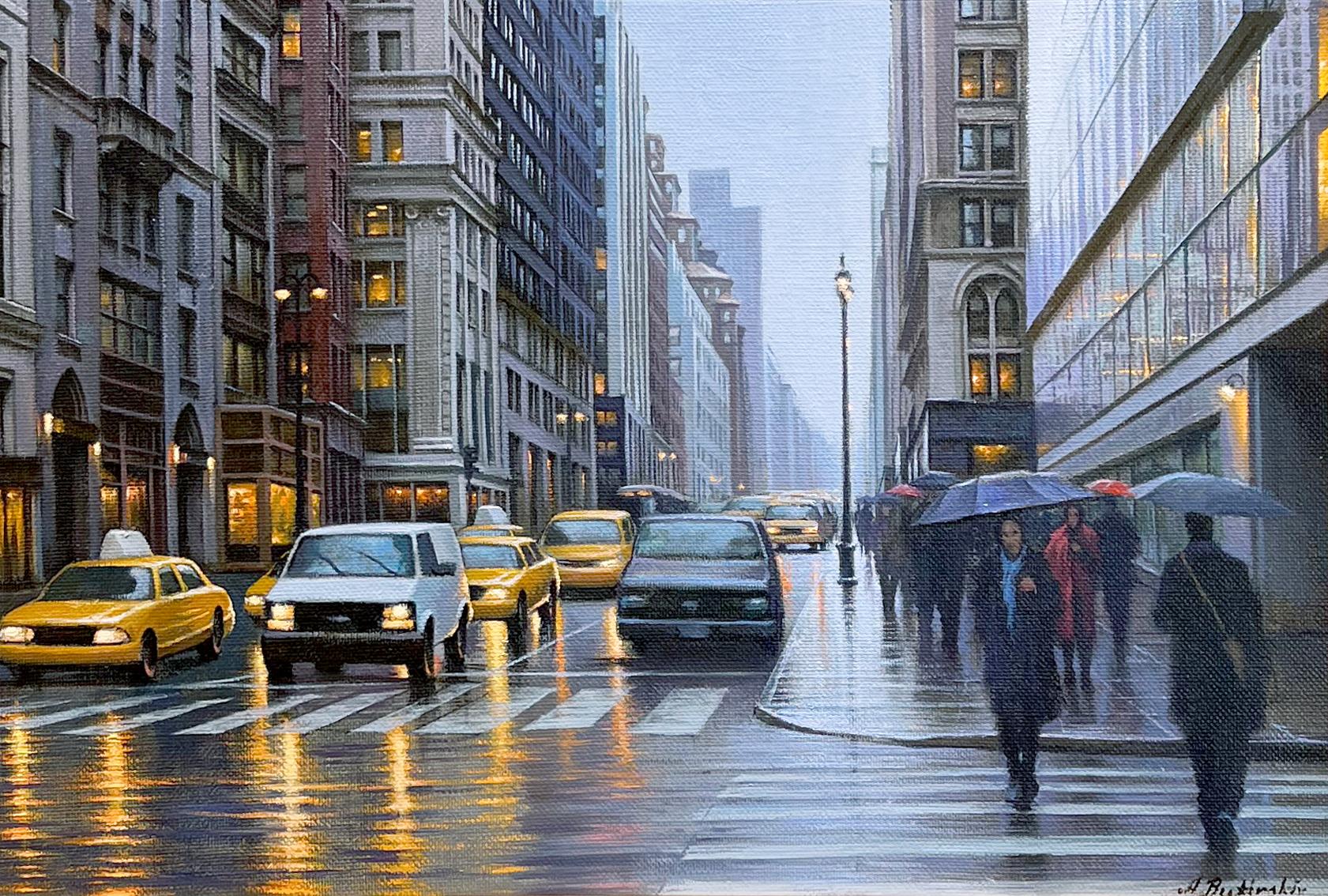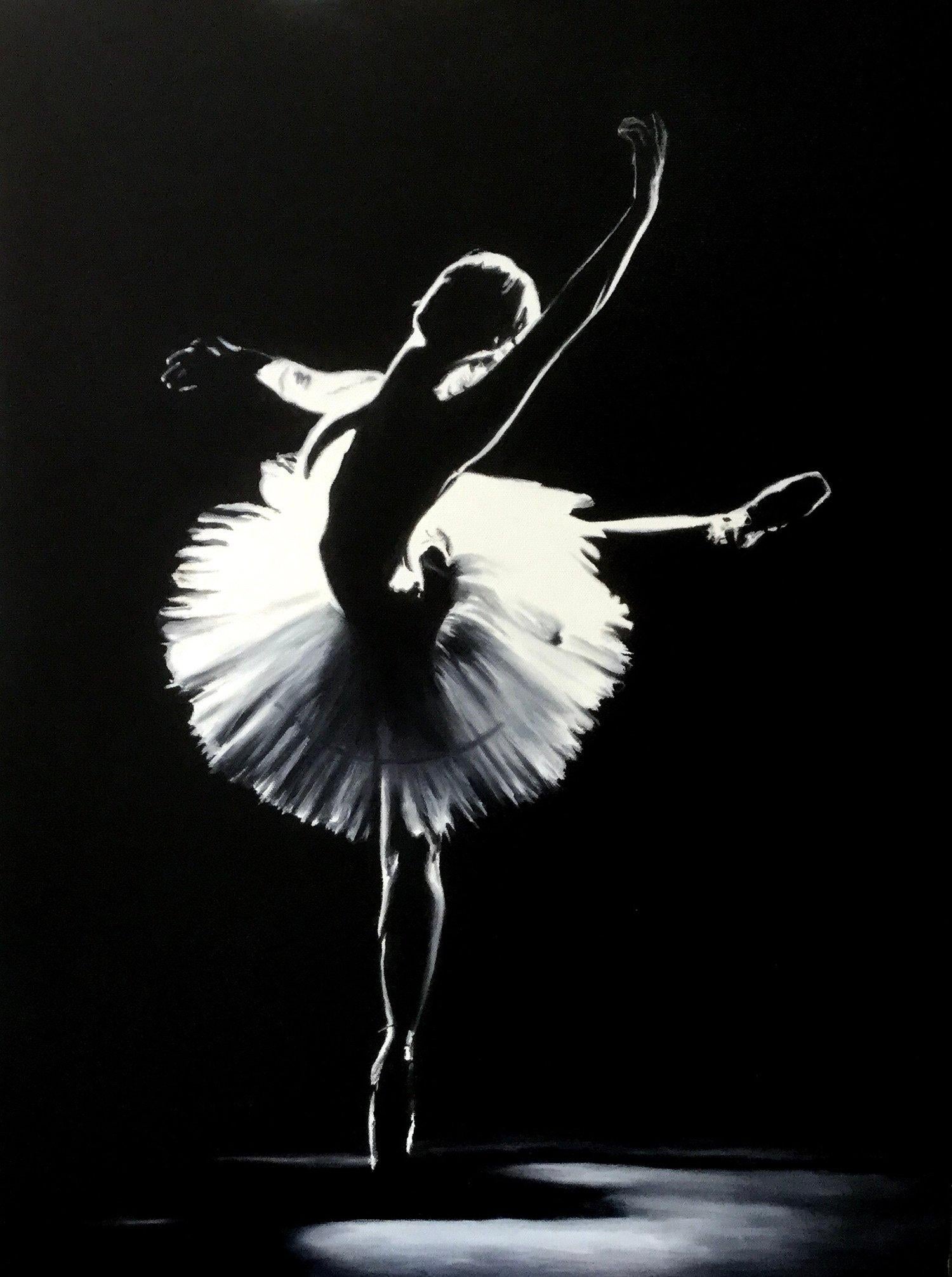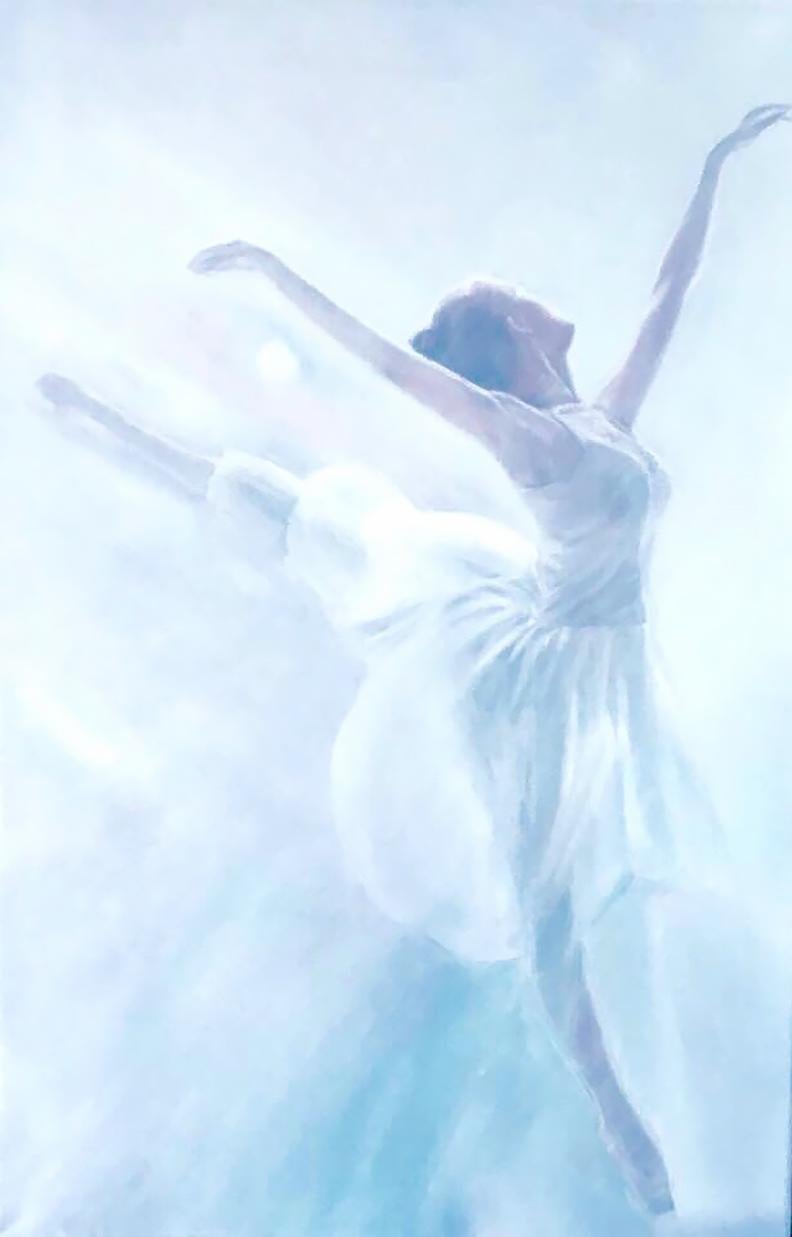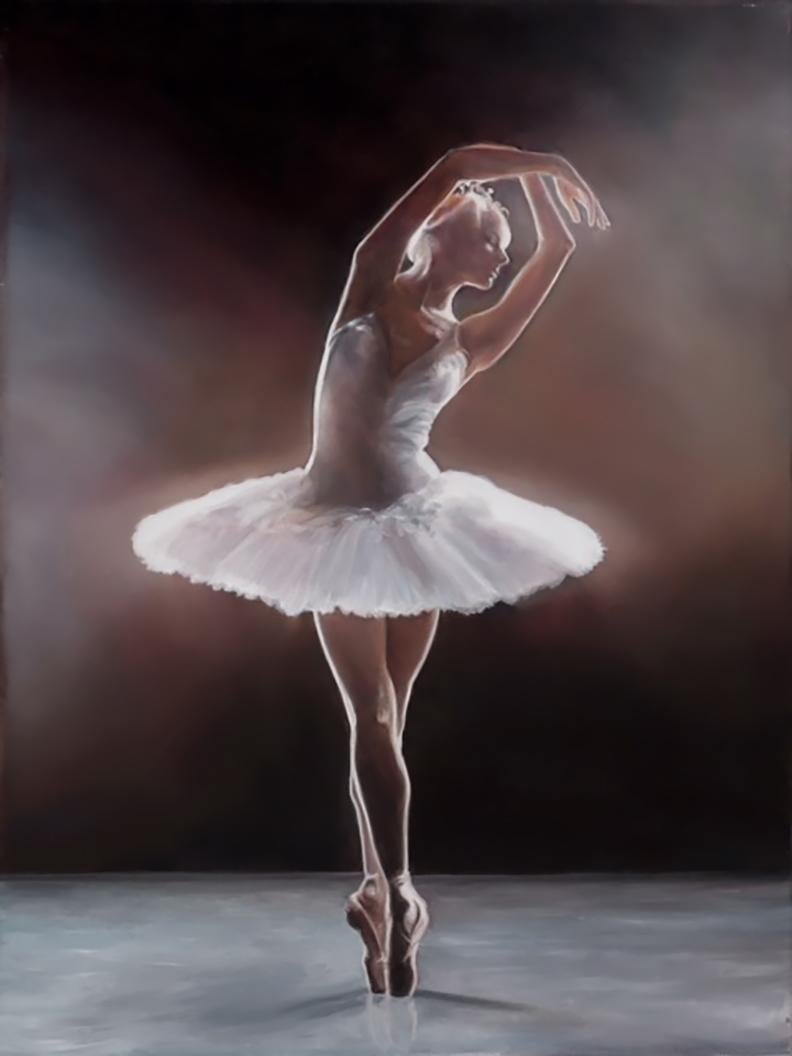Items Similar to "The end of the Ball", 19th Century oil on canvas by José García y Ramos
Want more images or videos?
Request additional images or videos from the seller
1 of 15
José García y Ramos"The end of the Ball", 19th Century oil on canvas by José García y Ramos circa 1905
circa 1905
About the Item
JOSÉ GARCÍA Y RAMOS
Spanish, ( 1852 - 1912 )
THE END OF THE BALL
signed J. García y Ramos and inscribed Sevilla (lower left)
oil on canvas
26 X 31-1/2 inches (66 X 80 cm.)
framed: 45-1/2 X 39-1/4 (116 X 100 cm.)
PROVENANCE
Sale: Sotheby´s New York, April 18, 2007, lot 63, illustrated
Acquired at the above sale by the present owner
The End of the Ball depicts an important event of the opera season in most large European cities. This was the costume or masked ball, the Baile de Mascaras, which the Spanish poster in the upper left of the painting announces. For this gala the central stalls of opera houses were covered for dancing, the foyer shielded by painted screens, and the stage used for a sumptuous banquet. Such balls were a tradition dating back to the sixteenth century carnival (García Ramos´ home city of Seville has long been known for its impressive festivals and public parties). Events were usually held at the end of a performance season, althought some theaters turned over their stages several times throughout a season; the often-scandalous affairs generated valuable publicity. Regular opera patrons attended along with artists, models, house singers and musicians. While men were expected to dress in traditional evening clothes, women were allowed greater license in costume; some dressed as characters from the best-know operas, sometimes competing in best-costume contests. The vivid sensual appeal of the masked ball is famously described in Gaston Leroux´s The Phantom of the Opera (1910) in which Raoul explains the overwhelming experience as "gayer, noisier, more Bohemian" than anything he had ever experienced, as he "climbed the grand staircase at five minutes to twelve, yet did not linger to look al the motley dresses displayed all the way up the marble steps, one of the richest settings in the world, allowed no facetious mask to draw him into a war of wits, replied to no jests and shook off the bold familiarity of a number of couples who had already become a trifle too gay."
In García y Ramos´ work such a party´s aftermath is spilling down the theater´s staircase and onto the streets, as the crowd leaves leaves the theater at early dawn. A woman still wearing her bright-pink mask appears to be the belle of the ball, loosely holding one escort´s arm while turning her attention to another. Others push behind her, ready to return home. Mixing with the high society guests are members of the opera troupe. One singer lurks at the compositions´ edge, dressed in the traditional black and white, clownish costume of the sad Pierrot, a stock figure from the commedia dell´arte. Surrounding the central group of revelers are working folk: great-coated doormen waiting for the people to leave so they may go home to rest, while a young boy impishly looks out as the viewer as he waits to earn a bit of money by holding umbrellas or cloaks for exiting patrons. Their huddled postures and somber costume colors stand apart from the gaiety of the ball goers, contrasting the fantasy world of the wealthy with the harsh reality of those who serve them. Despite this element of social commentary, overall, The End of the Ball intends to provide visual pleasure, demonstrating García Ramos´ embrace of the truly international style of painting, which had evolved in Europe by 1890. Paris was the center of the art world, and lively brushwork. Such technique was employed by García Ramos in capturing on canvas what Leroux explained was "the fun, here, waxed fast and furious" of the masked ball.
- Creator:José García y Ramos (1852 - 1912)
- Creation Year:circa 1905
- Dimensions:Height: 25.99 in (66 cm)Width: 31.5 in (80 cm)
- More Editions & Sizes:66 X 80 cm.Price: $99,211
- Medium:
- Movement & Style:
- Period:
- Condition:
- Gallery Location:Madrid, ES
- Reference Number:1stDibs: LU128114745932
About the Seller
5.0
Vetted Seller
These experienced sellers undergo a comprehensive evaluation by our team of in-house experts.
Established in 1977
1stDibs seller since 2019
21 sales on 1stDibs
Typical response time: 4 hours
- ShippingRetrieving quote...Ships From: Madrid, Spain
- Return PolicyA return for this item may be initiated within 14 days of delivery.
More From This SellerView All
- "Moonlit River Scene", Early 20th Century Oil on Canvas by Luis Graner y ArrufiBy Luis Graner Y ArrufiLocated in Madrid, ESLUIS GRANER Y ARRUFI Spanish, 1863 - 1929 MOONLIT RIVER SCENE signed and dated "L. Graner, 1925" (lower right) Oil on canvas 20-1/8 X 30 inches (51X 76 cm.) framed: 25-3/4 X 35-3/4 inches (65 X 90.5 cm.) PROVENANCE NEAL AUCTION COMPANY, New Orleans, LA, USA Private Collection, Barcelona Graner paints this work, Moonlit on the river, during his stay in the United States in the last stage of his artistic life, from 1910 to 1928, in full stage of maturity. This artwork reflects the constant search of the artist for the effects of light in his work. This persistent concern for light remains throughout his artistic life, which he learned in his Parisian stage under the influence of the painter Frances Platour. The silver light of the moon and the small lights at distance, which are tiny foci of artificial light, reflecting the river water, forming a chromatic range of greens, ocher and pearly that give a certain mystery to the composition, creating a modern approach to the landscape, by placing the two large trees at the edge of the river in the foreground Luís Graner y Arrufí, Spanish (1863–1929) was a Catalan painter in the Realistic style. He was born in Barcelona, and studied at the Escola de la Llotja from 1883, with Antoni Caba (color/composition) and Benet Mercadé (drawing). During his final year at school, he received a grant to study in Madrid, where he copied and learned from the Old Masters at the Museo del Prado. After that, supported by a fellowship, he moved to Paris and became a member of the Academie des Beaux-Arts. Later, he returned to Barcelona, but continued to travel to cities throughout Europe, including Berlin, Munich and Düsseldorf. Influenced by Richard Wagner's concept of "Gesamtkunstwerk" (Total Work of Art), he was motivated to create his own total art experience and organized the "Sala Mercè" (Mercy Hall) in Barcelona's Rambla District. The project involved contributors from every artistic discipline, including the new field of cinematography. The room was decorated by Antoni Gaudí. Other participants included Adrià Gual, Santiago Rusiñol, Ramon Casas...Category
1920s Realist Landscape Paintings
MaterialsCanvas, Oil
- "Ballet Lessons", 20th Century Oil on Canvas by Sebastián Llobet Ribas, SpanishLocated in Madrid, ESSEBASTIÁN LLOBET RIBAS Spanish, 1887 - 1975 signed "Llobet Ribas" (lower right) signed again "Llobet Ribas" (on the reverse) oil on canvas 32 x 25-3/4 inches (80.5 x 65 cm.) unframed PROVENANCE Private Collector, Barcelona Painter and draftsman of the twentieth century, born in Barcelona in 1887. He attended the Fine Arts Schools and was a disciple of Vicente Climent. He participated in the Self-Portraits Exhibition held in 1907, in the Drawing Exhibition in the Sala Parés in 1910, in several of the Spring and International Exhibition, and in the National Exhibition of 1942 and 1944 in Barcelona and in 1950 in Madrid. In the 1951 Exhibition of the Circulo de Bellas Artes de Palma de Mallorca, he obtained a medal for the set of drawings...Category
1930s Realist Figurative Paintings
MaterialsCanvas, Oil
- "Reales Alcázares de Sevilla" Large 20th Century oil on canvas by Liger HidalgoBy Fernando Liger HidalgoLocated in Madrid, ESFERNANDO LIGER HIDALGO Spanish , 1880 – 1945 "INTERIOR REALES ALCAZARES, SEVILLA" Signed & located "F. Liger Hidalgo, Sevilla " (lower right) ...Category
1920s Realist Interior Paintings
MaterialsCanvas, Oil
- "Carriage Ride by The River", 19th Century Oil on Canvas by Francisco MirallesLocated in Madrid, ESFRANCISCO MIRALLES Y GALUP Spanish, 1848- 1901 CARRIAGE RIDE BY THE RIVER signed and dated "F. Miralles, 1881" (lower left) oil on canvas 12-3/4 X 1...Category
1880s Realist Landscape Paintings
MaterialsCanvas, Oil
- "Ca' d' Oro, Venice" Late 19th Century Oil on Canvas of Venice, by Antonio ReynaBy Antonio Reyna ManescauLocated in Madrid, ESANTONIO REYNA MANESCAU Spanish, 1859 - 1937 CA' D' ORO, VENICE signed & located "A. Reyna, Venezia" (lower right) oil on canvas 11-1/2 x 19-3/4 ...Category
1890s Realist Landscape Paintings
MaterialsCanvas, Oil
- "Seville Gardens", Early 20th Century Oil on Canvas by Manuel García y RodríguezLocated in Madrid, ESMANUEL GARCÍA Y RODRÍGUEZ Spanish, 1863- 1925 SEVILLE GARDENS signed, located and dated "Garcia y Rodriguez, Sevilla 1923" (lower left) oil on canva...Category
1920s Realist Landscape Paintings
MaterialsCanvas, Oil
You May Also Like
- Venus. 2006. Oil on canvas, 66x183 cmLocated in Riga, LVVenus. 2006. Oil on canvas, 66x183 cm Realistic woman act on drapery Normunds Braslinsh (1962) Born 1962 in Riga, Latvia 1980–1986 Latvian Academy of Art, Painting Department 1973–...Category
Early 2000s Realist Figurative Paintings
MaterialsOil, Canvas
- Alexei Butirskiy, "N.Y. Cabbies", 14x20 Manhattan Cityscape Oil PaintingLocated in Saratoga Springs, NYThis piece, "N.Y. Cabbies", is a 14x20 landscape oil painting on canvas by artist Alexei Butirskiy featuring a view down a busy street in Manhattan, New York City on a rainy day. Ped...Category
2010s Realist Landscape Paintings
MaterialsCanvas, Oil
- Marie Channer, "Dancing in the Light" 24x18 Ballet Dancer Oil Painting on CanvasBy Marie ChannerLocated in Saratoga Springs, NYThis black and white piece, "Dancing in the Light", is a 24x18 oil painting on canvas by artist Marie Channer. Featured is a ballet dancer silhouetted in the spotlight of the stage, ...Category
2010s Realist Portrait Paintings
MaterialsCanvas, Oil
- Marie Channer, "Leap of Faith", 24x16 Ballet Dancer Oil Painting on CanvasBy Marie ChannerLocated in Saratoga Springs, NYThis piece, "Leap of Faith", is a 24x16 oil painting on canvas by artist Marie Channer. Featured is a ballet dancer in the spotlight of the stage, caught in pose. Overall cool tones ...Category
2010s Realist Portrait Paintings
MaterialsCanvas, Oil
- Marie Channer, "Grace", 24x18 Ballet Dancer Oil Painting on CanvasBy Marie ChannerLocated in Saratoga Springs, NYThis piece, "Grace", is a 24x18 oil painting on canvas by artist Marie Channer. Featured is a female ballet dancer caught in pose in the spotligh...Category
2010s Realist Figurative Paintings
MaterialsCanvas, Oil
- Marie Channer, "Breaking Pointe", 24x18 Ballet Dancer Oil Painting on CanvasBy Marie ChannerLocated in Saratoga Springs, NYThis piece, "Breaking Pointe", is a 24x18 oil painting on canvas by artist Marie Channer. Featured is a ballet dancer silhouetted in the spotlight of the stage, caught in pose. Glow ...Category
2010s Realist Figurative Paintings
MaterialsCanvas, Oil
Recently Viewed
View AllMore Ways To Browse
The Great Clothes
Artist Garcia
Antiques On Sale
Signed Garcia
High End Antiques
The Young Musician
Antique Model House
Dressed For The Opera
Womens On Sale
Ramos Artal
Embracing Couples Paintings
Figurative Gay
Paris Opera House Painting
Antique Marble Ball
So Black Boy
Oil Painting Gay
Paintings And Screens On Sale
Linger Longer

